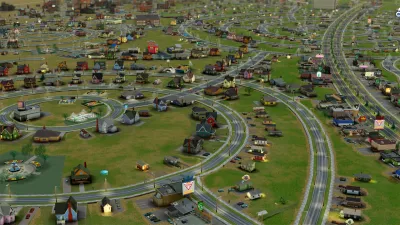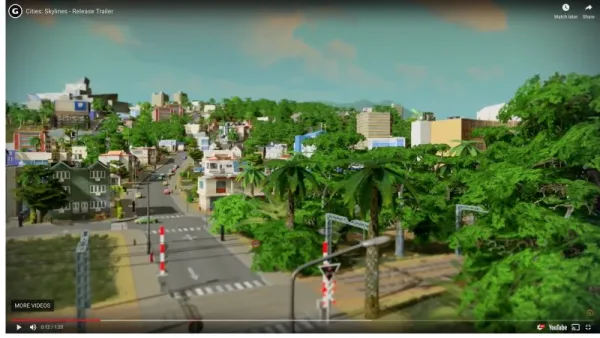The video game has inspired many people to pursue careers in planning. But, the newest version is also trying to better align the simulations with what planners face in the real world.

Jessica Roy writes about the history and influence of SimCity, the urban planning simulation game first released in 1989:
For many urban and transit planners, architects, government officials and activists, "SimCity" was their first taste of running a city. It was the first time they realized that neighborhoods, towns and cities were things that were planned, and that it was someone's job to decide where streets, schools, bus stops and stores were supposed to go.
While SimCity lead many planners into the field, the game has been criticized for creating worlds that do not reflect reality. The cities do not have bike lanes or mixed-use developments and, in the past, did not have parking. In addition, the options and solutions are oversimplified, say critics. "To lower crime rates, build police stations. If people complain about traffic, build more roads. If you need space to build a freeway or a stadium, raze working-class neighborhoods," says Roy.
The most recent iteration, an app called "SimCity: BuildIt" released in 2014, tries to address some of the limitations of earlier versions. The architecture and topography are more diverse, and some of the buildings include visible parking. "You can play a 'Green City' map in which residents have urban gardens and there's less pollution. Solar power is now an option," notes Roy.
FULL STORY: From video game to day job: How ‘SimCity’ inspired a generation of city planners

Analysis: Cybertruck Fatality Rate Far Exceeds That of Ford Pinto
The Tesla Cybertruck was recalled seven times last year.

National Parks Layoffs Will Cause Communities to Lose Billions
Thousands of essential park workers were laid off this week, just before the busy spring break season.

Retro-silient?: America’s First “Eco-burb,” The Woodlands Turns 50
A master-planned community north of Houston offers lessons on green infrastructure and resilient design, but falls short of its founder’s lofty affordability and walkability goals.

Test News Post 1
This is a summary

Analysis: Cybertruck Fatality Rate Far Exceeds That of Ford Pinto
The Tesla Cybertruck was recalled seven times last year.

Test News Headline 46
Test for the image on the front page.
Urban Design for Planners 1: Software Tools
This six-course series explores essential urban design concepts using open source software and equips planners with the tools they need to participate fully in the urban design process.
Planning for Universal Design
Learn the tools for implementing Universal Design in planning regulations.
EMC Planning Group, Inc.
Planetizen
Planetizen
Mpact (formerly Rail~Volution)
Great Falls Development Authority, Inc.
HUDs Office of Policy Development and Research
NYU Wagner Graduate School of Public Service




























